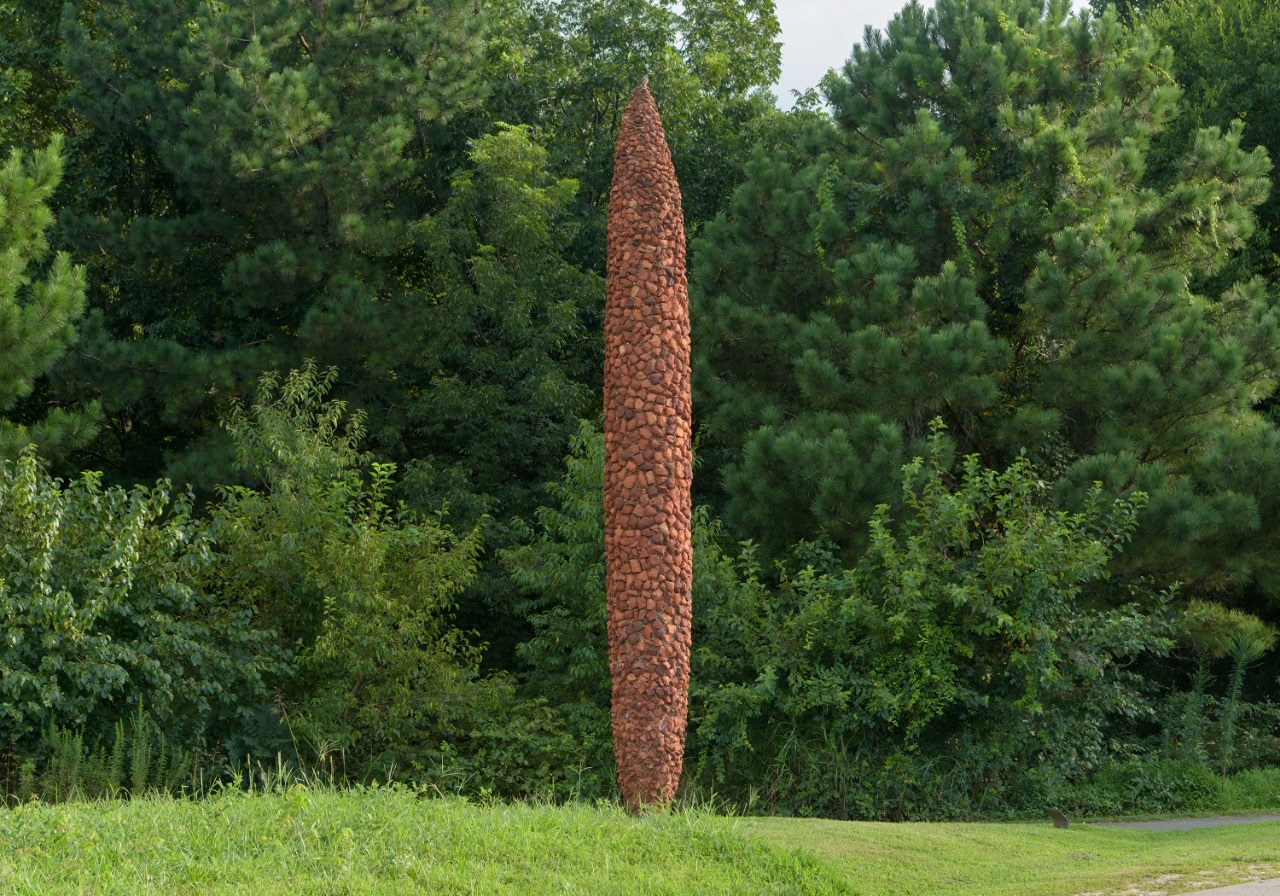Crossroads/Trickster I
Martha Jackson-Jarvis[[translate(episode,'title')]]
[[translate(episode,'audioCredit') || translate(episode,'credit')]][[translate(episode,'title')]]
[[translate(episode,'audioCredit') || translate(episode,'credit')]]Audio Transcript
Washington, DC–based artist Martha Jackson-Jarvis was commissioned to create a site-specific work of art for the Museum in the early 2000s. When she first visited to discuss ideas sometime around 2003, she was informed of the adjacent Polk Youth Correctional Center’s pending demolition, which by then was on land owned by the Museum. Jackson-Jarvis decided to incorporate bricks from the old Polk facility into her sculpture — a decision that paved the way for *Crossroads/Trickster I*.
The Polk Youth Correctional Center was in operation from 1963 to 1997. Prior to 1963, beginning in the 1920s, the facility had served as a state prison farm and, later, a men’s prison. Prisoners would make bricks during their time here. These bricks were used in the construction of additional buildings. So, the bricks that are now part of *Crossroads/Trickster I* were not only made on this land — they were also made by the prisoners.
Jackson-Jarvis combined the shattered bricks from Polk Youth Correctional Center with Italian glass tiles and carnelian stones to create *Crossroads/Trickster I*, which was installed shortly after the Ann and Jim Goodnight Museum Park’s opening in 2003. Today, the smokestack that towers over the Park is the only physical structure that remains of Polk Youth Correctional Center. But Jackson-Jarvis considers the prison bricks in *Crossroads/Trickster I* to be, quote, “Time capsules,” end quote.
Indeed, *Crossroads/Trickster I* is a modern monument constructed from the debris of the past.
To learn more about the Polk Youth Correctional Center, listen to its episode in our History Audio Tour.
Martha Jackson-Jarvis, *Crossroads/Trickster I*, 2005, brick, steel, mortar, glass tile, and stone, H. 20 ft., Commissioned by the North Carolina Museum of Art with funds from Wachovia Bank and the North Carolina Department of Transportation Enhancement Program Department of Transportation Enhancement Program
